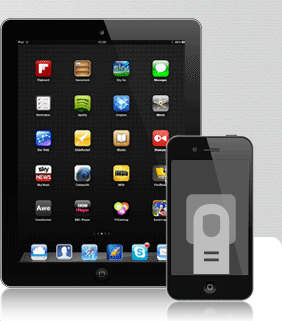In 1886, the German engineer Karl Benz registered a patent for the first petrol-powered car. At the time, nobody really saw how this cumbersome vehicle, propelled by a combustion engine, would possibly change the world. Now, over a century later, the automobile industry is being shaken by exciting new car designs that integrate advanced propulsion systems with a totally new interface.
Of course, today’s cars are very different from the ones that you could buy in the 19th Century. They have become far more secure, a lot more comfortable and much easier to drive. But there is a downside to all this – the many options, aids and electronic features that have started to clutter up our dashboard as manufacturers provide us with more and more functionalities that benefit both the driver and passengers. Entertainment, security, comfort – you name it – are all accessible via a bewildering selection of buttons, dials, trackwheels, touchscreens, and if you are adventurous enough, voice recognition systems.
In order to create a better driving experience, engineers have started invading our dashboards with more and more functions, offering us everything except an easy way to use and understand the interface of our car. I’m sure that, like me, you have let out the occasional grumble or frustrated yell at those clever engineers that have made a once simple system so very complicated to use that you can’t even connect your phone to the car, listen to an MP3 song or figure out how to use your GPS.
So, with this thought in mind, let’s have a look to some of the regular and classy sedans that are now available, and in particular, their increasingly cluttered dashboards:

Porsche Panamera: 47 buttons, dials or switches

Mercedes E-Class: 44 buttons, dials or switches

Audi A6: 43 buttons: dials or switches
 BMW Series 5: 45 buttons, dials or switches
BMW Series 5: 45 buttons, dials or switches
You see what I mean? There are more than 40 things that you can press, turn, pull or push, and I’m not even counting what can be found on the steering wheel and doors (easily 20).
Doesn’t this avalanche of buttons remind you something? Yes, that’s right – early smartphones. You may remember that, back in 2007 when Apple introduced the iPhone, our smartphones used to look like this:
Of course, you needed 26 buttons for the alphabet, but there were also 10 to 20 additional buttons to perform other tasks. At best, a third of the phone’s surface was occupied, which meant a smaller screen, a fixed configuration and increasing complexity for the interface. Every new model introduced new buttons and was even “smarter” than the previous generation.
Cars are now on the same track, with manufacturers adding more and more stuff, which is creating an increasingly complex, cluttered and interface.
Today it looks like the automobile industry is getting some welcome and much-needed help thanks to an exciting newcomer: Tesla Motors. This young company – created 10 years ago by Elon Musk and some other smart people – introduced its first sedan, called Model S, last summer which was aimed for massed production (>20K models/year). Apart from being a complete new car, powered by electricity only, the cabin offers a brand new dashboard with just two buttons beside a magnificent 17-inch screen.
 Tesla Model S dashboard: 2 buttons and one 17 inch screen
Tesla Model S dashboard: 2 buttons and one 17 inch screen
All the car’s functions and controls are available through this impressive touchscreen. The interface is well designed with every feature just two or three clicks away, except for the main features that can be easily reached at the top and bottom of the screen.
Even if Tesla Motors did build this marvelous interface from scratch, you can’t deny it is largely inspired by Apple’s iDevices. Simple, clear, attractive and intuitive were the first words that came to mind when I gave the car a test drive last October. With remote updates, this car will never be outdated like most of its rivals sold by competitors.
Car manufacturers have finally seemed to have paid attention to this impressive newcomer and are all moving towards a better integration with the smartphone manufacturers. For example, Apple announced a deal with BMW, Audi and Mercedes last year to integrate a Siri button on the steering wheel, which gives drivers direct access to iPhone features and services, and there are rumours of a better integration between car systems and iPhone applications. It’s about time.
Meanwhile, how old is the interface of your own electronic products? Has your company thought about changing its interface yet?















